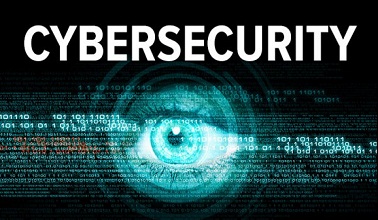

Note: Please check your Spam or Junk folder, in case you didn't receive the email with verification code.
Linear: Sequential Order
About the Course
The course has been designed to give students an extensive overview of Cyber Security issues, tools and techniques that are critical in solving problems in cyber security domains. The course aims at providing students with concepts of computer security, cryptography, digital money, secure protocols, detection and other security techniques. The course will help students to gauge understanding in essential techniques in protecting Information Systems, IT infrastructure,analysing and monitoring potential threats and attacks, devising security architecture and implementing security solutions. The students will also have a wider perspective to information security from national security perspective from both technology and legal perspective. After completion of this course, the students should be able to understand, appreciate, employ, design and implement appropriate security technologies and policies to protect computers and digital information. Identify & Evaluate Information Security threats and vulnerabilities in Information Systems and apply security measures to real time scenarios Identify common trade-offs and compromises that are made in the design and development process of Information Systems Demonstrate the use of standards and cyber laws to enhance information security in the development process and infrastructure protection.
Skills Required
There is no particular prerequisite to learn Cyber Security, you will be able to do very well, if you have these basic skills:
1. Basic Programming Knowledge
2. Good command in Maths and Statistics
3. Business Knowledge
4. Data Visualisation skills
5. Good communication skills.
Who can learn
1. Any professional from Business Analytics/ Business Intelligence background.
2. Engineering or Non-Engineering aspirants wanting to become a Data Scientist.
3. Managers from Analytics background and those who are leading a team of Analysts .
4. Any Data Analyst or Software Developer aspiring to be a Data Scientist.
5. Professionals wanting to build machine learning models, using distributed storage and distributed processing.
 1.1 Cyber Security Concepts Essential Terminologies
1.1 Cyber Security Concepts Essential Terminologies
 Assessment
5 Questions
Assessment
5 Questions
 2.1 Introduction to Cryptography
2.1 Introduction to Cryptography
 2.2 Applications of Cryptography
2.2 Applications of Cryptography
 2.3 Overview of Firewalls - Types of Firewalls - User Management, VPN Security
2.3 Overview of Firewalls - Types of Firewalls - User Management, VPN Security
 2.4 Security Protocols Security at the Application Layer- PGP and SMIME
2.4 Security Protocols Security at the Application Layer- PGP and SMIME
 2.5 Open Source Free Trial Tools Implementation of Cryptographic techniques -OpenSSL
2.5 Open Source Free Trial Tools Implementation of Cryptographic techniques -OpenSSL
 2.6 Hash Values Calculations MD5, SHAT, SHA256, SHA 512, Steganography (Stools)
2.6 Hash Values Calculations MD5, SHAT, SHA256, SHA 512, Steganography (Stools)
 Assessment
5 Questions
Assessment
5 Questions
 3.1 Infrastructure and Network Security Introduction to System Security -Server Security -OS Security -Physical Security
3.1 Infrastructure and Network Security Introduction to System Security -Server Security -OS Security -Physical Security
 3.2 Introduction to Networks- Network packet Sniffing -Network Design Simulation
3.2 Introduction to Networks- Network packet Sniffing -Network Design Simulation
 3.3 DOS DDOS attacks
3.3 DOS DDOS attacks
 3.4 Asset Management and Audits -Vulnerabilities and Attacks
3.4 Asset Management and Audits -Vulnerabilities and Attacks
 3.5 Intrusion detection and Prevention Techniques -Host based Intrusion prevention System
3.5 Intrusion detection and Prevention Techniques -Host based Intrusion prevention System
 3.6 Open Source Free Trial Tools Wireshark, Cain & abel -iptables Windows Firewall -snort, suricata, fail2ban
3.6 Open Source Free Trial Tools Wireshark, Cain & abel -iptables Windows Firewall -snort, suricata, fail2ban
 Assessment
5 Questions
Assessment
5 Questions
 4.1 Cyber Security Vulnerabilities & Safe Guards: Internet Security - Cloud Computing & Security - Social Network sites security
4.1 Cyber Security Vulnerabilities & Safe Guards: Internet Security - Cloud Computing & Security - Social Network sites security
 4.2 Cyber Security Vulnerabilities-Overview
4.2 Cyber Security Vulnerabilities-Overview
 4.3 Vulnerabilities in software, System administration, Complex Network Architectures
4.3 Vulnerabilities in software, System administration, Complex Network Architectures
 4.4 Open Access to Organizational Data-Weak Authentication, Authorization-Unprotected Broadband communications, Poor Cyber Security Awareness
4.4 Open Access to Organizational Data-Weak Authentication, Authorization-Unprotected Broadband communications, Poor Cyber Security Awareness
 4.5 Cyber Security Safeguards- Overview -Access control, IT Audit, Authentication -Open Web Application Security Project (OWASP) -Web Site Audit and Vulnerabilities assessment
4.5 Cyber Security Safeguards- Overview -Access control, IT Audit, Authentication -Open Web Application Security Project (OWASP) -Web Site Audit and Vulnerabilities assessment
 4.6 Open Source/ Free/ Trial Tools: WinAudit, Zap proxy (OWASP) -burp suite, DVWA kit
4.6 Open Source/ Free/ Trial Tools: WinAudit, Zap proxy (OWASP) -burp suite, DVWA kit
 Assessment
15 Questions
Assessment
15 Questions
 5.1 Malware Explanation of Malware
5.1 Malware Explanation of Malware
 5.2 Types of Malware Virus, Worms, Trojans, Rootkits
5.2 Types of Malware Virus, Worms, Trojans, Rootkits
 5.3 OS Hardening Process Management -Memory Management, Task Management
5.3 OS Hardening Process Management -Memory Management, Task Management
 5.4 Windows Registry/ services another configuration
5.4 Windows Registry/ services another configuration
 5.5 Malware Analysis
5.5 Malware Analysis
 5.6 Open Source/ Free/ Trial Tools: Antivirus Protection -Anti Spywares -System tuning tools, Anti Phishing
5.6 Open Source/ Free/ Trial Tools: Antivirus Protection -Anti Spywares -System tuning tools, Anti Phishing
 Assessment
5 Questions
Assessment
5 Questions
 6.1 Security in Evolving Technology:Biometrics
6.1 Security in Evolving Technology:Biometrics
 6.2 Mobile Computing and Hardening on android and ios IOT Security
6.2 Mobile Computing and Hardening on android and ios IOT Security
 6.3 Web server configuration and Security
6.3 Web server configuration and Security
 6.4 Introduction, Basic security for HTTP Applications and Services -Web Services like SOAP, REST etc
6.4 Introduction, Basic security for HTTP Applications and Services -Web Services like SOAP, REST etc
 6.5 Identity Management and Web Services -Authorization Patterns -Security Considerations, Challenges
6.5 Identity Management and Web Services -Authorization Patterns -Security Considerations, Challenges
 6.6 Open Source/ Free/ Trial Tools: adb for android, xcode for ios
6.6 Open Source/ Free/ Trial Tools: adb for android, xcode for ios
 Assessment
5 Questions
Assessment
5 Questions
 7.1 Cyber Laws and Forensics:Introduction
7.1 Cyber Laws and Forensics:Introduction
 7.2 Cyber Security Regulations, Roles of International Law - The state and Private Sector in Cyberspace
7.2 Cyber Security Regulations, Roles of International Law - The state and Private Sector in Cyberspace
 7.3 The Indian Cyberspace, National Cyber Security Policy 2013
7.3 The Indian Cyberspace, National Cyber Security Policy 2013
 7.4 Introduction to Cyber Forensics - Need of Cyber Forensics
7.4 Introduction to Cyber Forensics - Need of Cyber Forensics
 7.5 Cyber Evidence, Documentation and Management of Crime Scene -Image Capturing and its importance -Partial Volume Image, Web Attack Investigations
7.5 Cyber Evidence, Documentation and Management of Crime Scene -Image Capturing and its importance -Partial Volume Image, Web Attack Investigations
 7.6 Denial of Service Investigations, Internet Crime Investigations
7.6 Denial of Service Investigations, Internet Crime Investigations
 7.7 Internet Forensics -Steps for Investigating Internet Crime -Email Crime Investigations
7.7 Internet Forensics -Steps for Investigating Internet Crime -Email Crime Investigations
 7.8 Open Source Free/ Trial Tools: Case Studies related to Cyber Law
7.8 Open Source Free/ Trial Tools: Case Studies related to Cyber Law
 7.9 Common Forensic Tools like dd, md5sum, shal sum, Ram dump analysis, USB device
7.9 Common Forensic Tools like dd, md5sum, shal sum, Ram dump analysis, USB device
 Assessment
15 Questions
Assessment
15 Questions
 Final Assessment
20 Questions
Final Assessment
20 Questions
The certificate issued for the Course will have
Only the e-certificate will be made available. No Hard copies. The certificates issued by NITTTR Chandigarh, MHRD - Government of India and The Academic Council of uLektz. can be e-verifiable at www.ulektzskills.com/verify.



 45 hours Learning Content
45 hours Learning Content 100% online Courses
100% online Courses English Language
English Language Certifications
Certifications